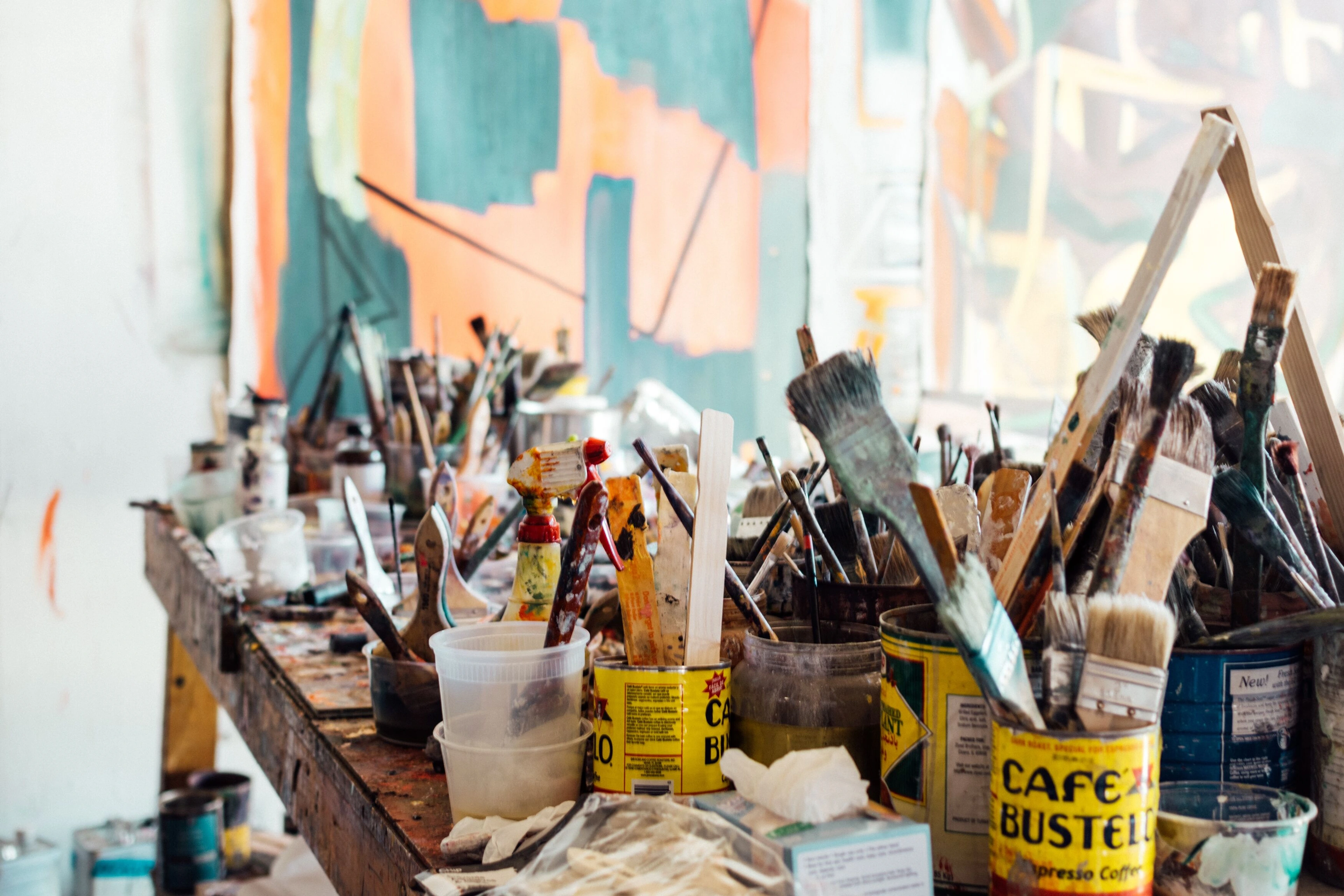
Why is Art Important? An Artist's Deeply Personal & Expanded Take
Why does art matter? An artist shares a deeply personal, expanded take on art's power to communicate, reflect, enrich, challenge, inspire, heal, preserve culture, foster community, and offer pure joy and play. Includes art in education, economic impact, technology, and more, with new insights on protest, science, and AI.
Why is Art Important? An Artist's Deeply Personal & Expanded Take
Have you ever walked into a room, maybe a gallery, maybe just someone's living room, and felt something shift? A painting on the wall, a sculpture in the corner, even a quirky print – it just... did something. That feeling, that connection, is at the heart of why art is important. It's not just about pretty pictures or fancy objects; it's something much deeper, much more human. And it's not just paintings or sculptures; art comes in countless forms – from intricate drawings and vibrant textiles to immersive installations and digital creations. I remember standing in front of a Rothko painting once, just a few blocks of color, and feeling an unexpected wave of melancholy wash over me. It wasn't the subject matter, obviously, but the sheer presence of the color and scale. The way the edges seemed to vibrate, the depth of the pigment... it felt like standing before a vast, quiet ocean of emotion. That's the quiet, profound power of art. Or maybe it was a tiny, intricate drawing I saw at a local fair – just pencil on paper, but the artist had captured the fleeting expression on a person's face so perfectly it felt like I knew them. It stopped me in my tracks. That moment, that unexpected jolt of recognition or feeling, is why I keep coming back to art, both as a maker and a viewer. It's essential, almost like breathing, for me as someone who spends a good chunk of my life wrestling with paint and canvas in my studio. But I know that for many, it can feel intimidating, confusing, or simply irrelevant. I mean, who hasn't stood in a museum wondering, "What am I even supposed to be feeling here?" It's okay to feel that way! So, let's dive a little deeper into why art truly matters, not just in museums or auction houses, but in our everyday lives and even within ourselves. We'll explore how it speaks, reflects, enriches, challenges, heals, preserves, fosters community, and even just lets us play. This is my take, as an artist who lives and breathes this stuff every day. Ready to dive in?
Art as a Voice: Speaking Without Words
Let's start with the most fundamental aspect: communication. Art is a language that transcends words, borders, and time. Think about it: an artist has something inside them – an emotion, an idea, a reaction to the world – and they translate it into something visual. Whether it's the raw emotion in an Expressionist painting or the intricate symbolism in a historical piece, art speaks.
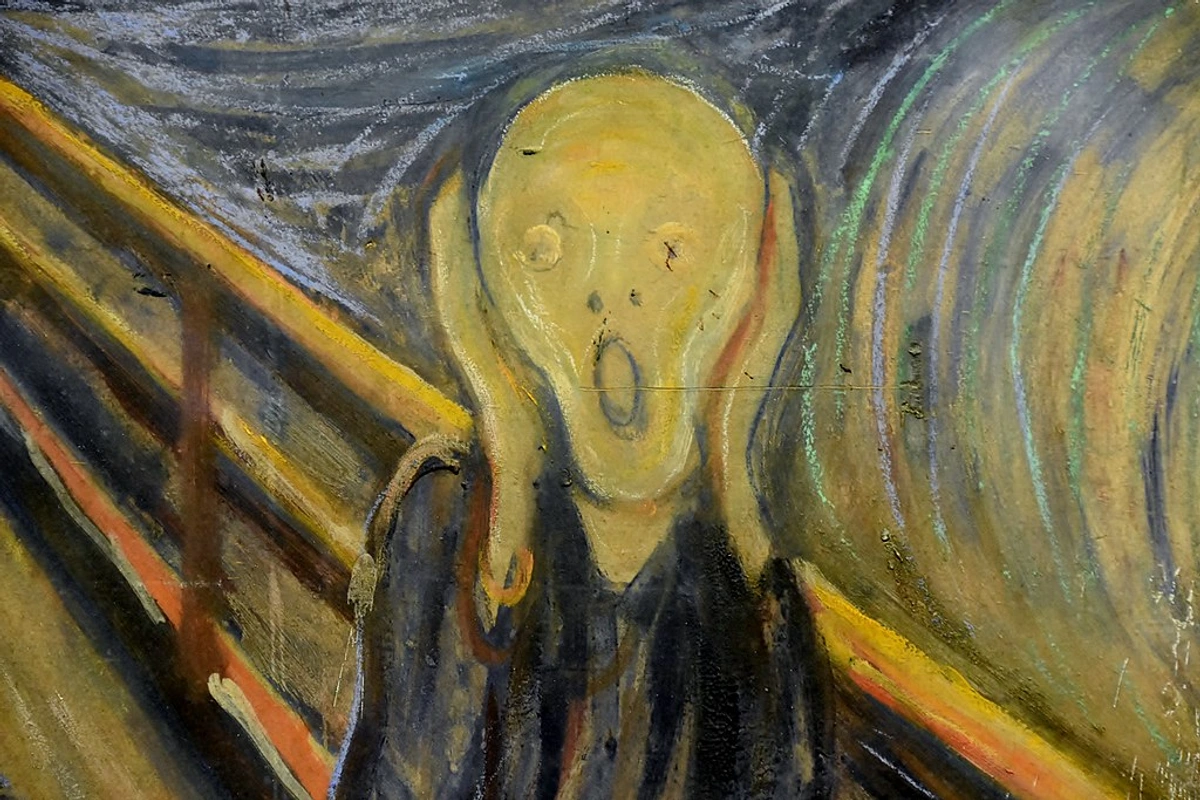
It allows artists to share their unique perspective, their joys, their sorrows, their protests. And it allows us, the viewers, to connect with that. We might not understand every brushstroke or symbol, but we can feel it. It sparks something within us, a resonance that's hard to explain but undeniable.
Beyond subject matter, art communicates through its very visual elements – the energy of a jagged line versus a smooth curve, the weight of a heavy form versus a light one, the tactile quality of rough texture versus smooth, the balance or tension in composition. These are all part of the artist's vocabulary, shaping the viewer's experience on a subconscious level. It's like a silent conversation happening between the artwork and your inner world, or maybe the elements are whispering secrets or shouting stories you didn't know you needed to hear.
Different mediums also carry their own inherent expressive qualities, like different accents in this visual language. The fluidity and transparency of watercolor speak differently than the thick, impasto texture of oil paint. The solid, grounded presence of a sculpture contrasts with the ephemeral nature of a performance piece. Understanding these material 'accents' can deepen our appreciation of how the artist is communicating. Think of the difference between a whispered secret and a shouted declaration – both communicate, but the medium changes everything.
For me, the act of putting paint on canvas is often about wrestling with something internal – a feeling, a question, a fleeting thought. I might start with a vague sense of unease or a burst of unexpected joy, and the process of mixing colors, making marks, and building layers becomes a way to give that form. The finished piece might not explicitly show that struggle, but the process itself is a form of communication, a way to give form to the formless. It's a deeply personal dialogue that, somehow, can resonate with someone else who sees the work. Even in my abstract pieces, where there's no recognizable subject, I'm trying to translate an internal landscape – a mood, a memory, a pure visual sensation. The way colors interact, the texture of the paint, the energy of the brushstrokes – these are all part of that non-verbal language. And that connection, even if their interpretation is different from my original intent, is incredibly powerful. I remember working on a piece after a period of intense stress; the initial layers were chaotic, muddy browns and blacks. But as I worked through it, adding vibrant blues and yellows, the painting shifted, and so did my internal state. The final piece, full of dynamic contrasts, felt like a visual representation of moving through difficulty towards light. That's the kind of non-verbal story art can tell.
Art also serves as a powerful voice for social and political commentary. Throughout history, artists have used their work to challenge injustice, expose corruption, and advocate for change. Think of the powerful anti-war statements in Picasso's Guernica or the biting satire of artists like William Hogarth. More recently, street art and protest posters have become vital tools for expressing dissent and mobilizing communities. Artists like Ai Weiwei continue this tradition, using their platforms to critique political systems and human rights issues. Art gives voice to the voiceless and makes the invisible visible, forcing us to confront uncomfortable truths.

So, art isn't just something to look at; it's an active exchange, a way for us to connect with the artist's inner world and, in turn, our own, and to engage with the world around us on a deeper level.
A Mirror to the World and Ourselves
Moving from the internal dialogue of the artist to the external world, art is a powerful mirror. It reflects the society, the culture, and the historical moment in which it was created. Looking at art from different periods is like taking a journey through time. You see how people lived, what they valued, what they struggled with. From ancient cave paintings to modern art installations, art documents the human experience, including technological shifts or scientific understandings of the world. Think of early scientific illustrations or how the Industrial Revolution influenced art movements.
Art also reflects the prevailing philosophical and scientific understanding of an era. The development of linear perspective in the Renaissance, for instance, wasn't just a technical innovation; it reflected a new, humanistic worldview that placed man at the center and sought to understand the world through rational observation. Later, the fragmented perspectives of Cubism can be seen as echoing the revolutionary scientific theories of relativity and quantum mechanics, challenging fixed viewpoints and embracing multiple realities. Impressionism, with its focus on capturing fleeting moments and the effect of light, emerged partly in response to the rise of photography, which freed artists from purely representational duties and pushed them to explore subjective experience. Art and scientific/philosophical thought are often in a dynamic conversation.
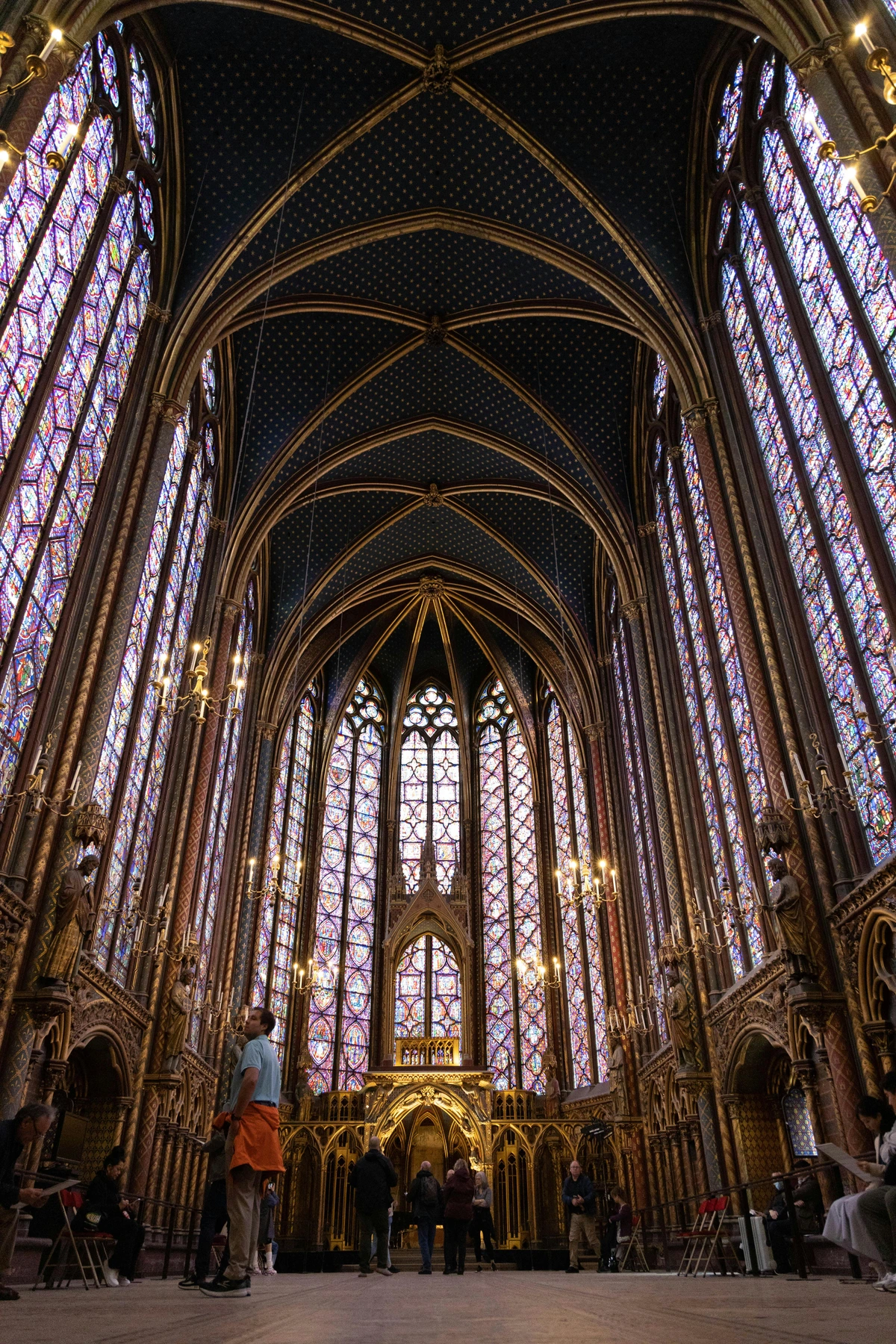
Consider a Dutch Golden Age genre scene depicting everyday life – it offers a window into the domestic routines, social customs, and material culture of that era in a way a history book might not. Or look at the powerful social commentary embedded in works created during times of political upheaval or industrial change. Art captures the zeitgeist, the spirit of an age, making history feel tangible and relatable. Even architectural art, like the stunning stained glass of Sainte-Chapelle, reflects the values and aspirations of its time – a desire for divine light and intricate beauty.
But art doesn't just reflect the past or present; it can also mirror our aspirations, dreams, and imagined futures. Utopian architectural drawings, speculative science fiction art, or abstract works exploring potential realities all hold up a mirror to what we hope for, fear, or can conceive. It's a space for visual 'what ifs'.
Crucially, art also reflects identity, both individual and collective. It's a way for artists and communities to explore, express, and assert who they are, their heritage, and their place in the world. Think of contemporary art from the African diaspora or indigenous art forms – they are powerful expressions of identity and experience.
And it also reflects us. When you stand in front of a piece of art, your reaction is personal. It might challenge your assumptions, evoke a forgotten memory, or simply make you see the world a little differently. It encourages introspection and helps us understand our own feelings and perspectives. Think about contemporary art – a piece dealing with climate change, social justice, or even the absurdity of modern life. It holds up a mirror to our current moment, forcing us to confront issues or simply see the familiar through a new lens. I recently saw an installation that used discarded plastic bottles to create a wave-like structure; it was beautiful and unsettling, a stark reminder of our impact on the environment that hit me harder than any statistic. It made me think about my own consumption habits in a way a news report never could. And in my own work, I often find that the finished piece, or even the process itself, reveals something to me about my own state of mind or how I'm processing the world. It's like holding up a mirror to my own subconscious, sometimes showing me things I didn't even realize I was feeling. I remember working on a series of abstract paintings using only black and white; I thought I was exploring form and contrast, but looking back, I see now they were a direct reflection of a period of intense uncertainty and emotional 'grayscale' in my life. Art held up that mirror before I even consciously understood what was happening.
Art, then, is not just a record of the world, but a dynamic tool for understanding it and our place within it. It's a conversation between the past, the present, and our own inner landscape.
Art Enriches Our Lives and Spaces
Beyond the big, philosophical stuff, art simply makes life better. It adds beauty, color, and interest to our surroundings. Imagine a home without any art on the walls – it would feel... empty, wouldn't it? Art transforms a house into a home. It creates atmosphere, sparks conversation, and reflects the personality of the people who live there. My own studio, despite the inevitable paint splatters and general chaos (you should see the state of my brushes!), feels like a sanctuary precisely because it's filled with works in progress, finished pieces, and art that inspires me. It's a space that feels alive with creative energy, bathed in the specific quality of light from the north-facing window, surrounded by the comforting smell of oil paint and turpentine, and that one stubborn stain on the floor that tells a whole story. It's my space, shaped by the art within it.
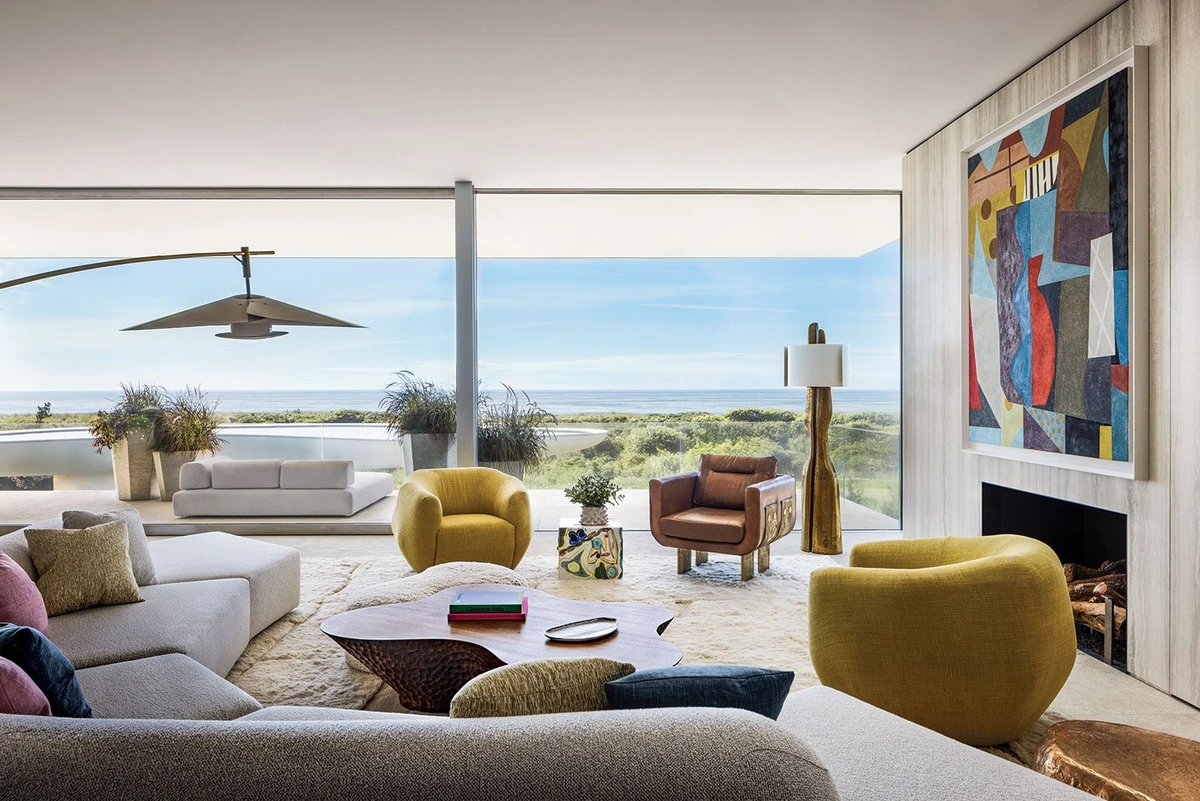
And it's not just inside our private walls. Think about the impact of public art – murals transforming drab cityscapes, sculptures in parks, installations in train stations. These pieces enrich our shared spaces, making daily commutes more interesting and fostering a sense of place and community. They remind us that beauty and creativity aren't confined to galleries; they're part of the living, breathing world around us. I remember walking through a particularly grey, industrial part of a city and suddenly encountering a massive, vibrant mural covering the side of a building. It was like a splash of unexpected joy, completely changing the feel of the street and lifting my mood instantly.
Art also increasingly finds its way into workplaces and commercial environments, transforming sterile offices into inspiring spaces or making retail experiences more engaging. Think about how art is used in hotels, restaurants, or even hospitals to create a specific mood or identity. It impacts mood, encourages creativity, and signals company values. A well-chosen piece in a lobby or waiting area can make a space feel welcoming and thoughtful.
Choosing art for your space is a personal journey ([/finder/page/how-to-define-your-personal-art-style-and-taste]). It's about finding pieces that resonate with you, that make you feel good, or that simply make you smile. Whether it's an original painting, a limited edition print ([/finder/page/why-buy-art-prints]), or even a poster, surrounding yourself with art you love is an act of self-care and expression. It's about creating an environment that nourishes your soul, one piece at a time. If you're looking to buy art, remember it's about connection, not just decoration. It's about bringing a piece of that vibrant, speaking, reflecting world into your own.
Ultimately, art makes the spaces we inhabit more vibrant, personal, and engaging. It's the soul of a room, the unexpected smile on a street corner.
Art as Play, Joy, and Experimentation
Let's be honest, sometimes art is just... fun. It's about the sheer joy of color, form, and texture. It's the playful exploration of materials and ideas. While we often talk about art's deep meanings and societal impact, let's not forget the simple, pure pleasure it can bring. Think about the vibrant energy of a Fauvist painting or the intricate patterns of a mosaic. There's a fundamental human delight in beauty and visual harmony.
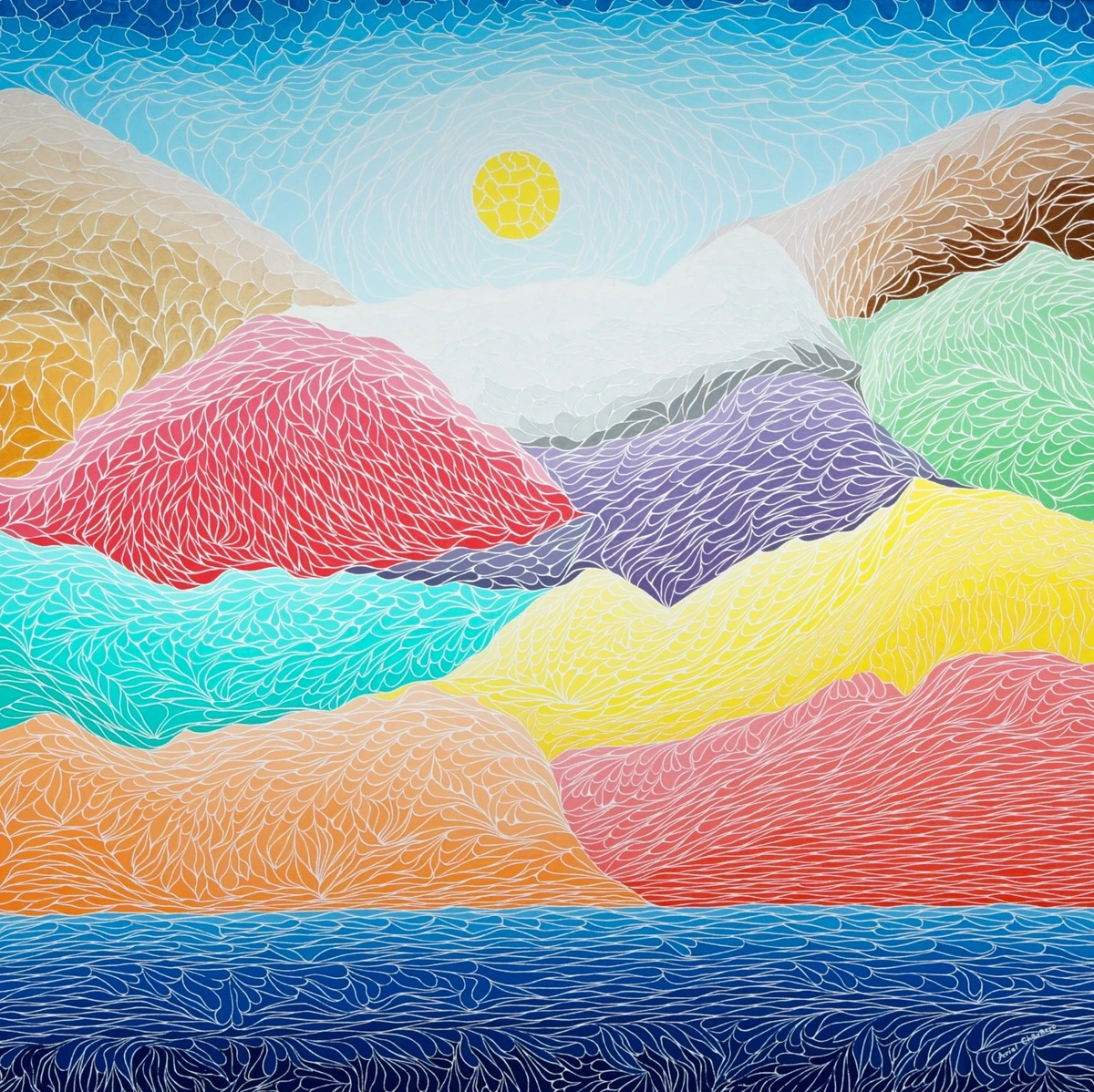
For me, the act of painting is often a form of play. It's experimenting, making messes, seeing what happens when colors collide or textures build up. I remember one time I was trying to achieve a specific muted green, and I accidentally mixed in a tiny bit of bright orange. Instead of getting the muddy mess I expected, it created this incredibly vibrant, almost glowing olive tone I'd never have found intentionally. It was a happy accident born purely from playful experimentation, and it ended up being the key color in that whole series. It's a space where I can let go of rules and just explore. This experimentation is crucial; it's how artists discover new techniques, push boundaries, and keep their practice fresh. It's not always about a finished product, but the process of discovery itself. Sometimes the most exciting moments are when something completely unexpected happens on the canvas.
Experiencing art can be the same – it can be a moment of pure aesthetic pleasure, a visual treat that lifts your spirits or simply makes you pause and appreciate the world in a new way. And it's not just visual; the sensory experience of art matters too. The rough texture of a canvas, the cool feel of marble, the immersive soundscape of an installation – these physical sensations add layers to our engagement and can evoke a primal sense of joy and wonder. I remember seeing a large-scale abstract painting with incredibly thick, impasto paint; I wasn't allowed to touch it, of course, but just looking at the texture made my fingers itch with the desire to feel it, adding a whole other dimension to the visual experience. It doesn't always have to be heavy or profound; sometimes, its importance lies simply in its ability to bring a little more beauty and joy into our lives.
Art reminds us of the simple pleasure of creation and observation, a vital counterpoint to the complexities of life. It's permission to play in a world that often demands seriousness.
Art Challenges and Inspires
Sometimes art isn't comfortable. It can be challenging, provocative, or even disturbing. And that's important too! Art pushes boundaries, questions norms, and forces us to confront difficult truths. It can be a catalyst for social change and a powerful tool for activism. Art has historically been used to question power structures, challenge censorship, and give voice to the marginalized. Think of movements like Dada, Surrealism, or Performance Art, which deliberately set out to disrupt expectations and provoke thought. Political posters, protest murals, and conceptual installations all serve this vital function.
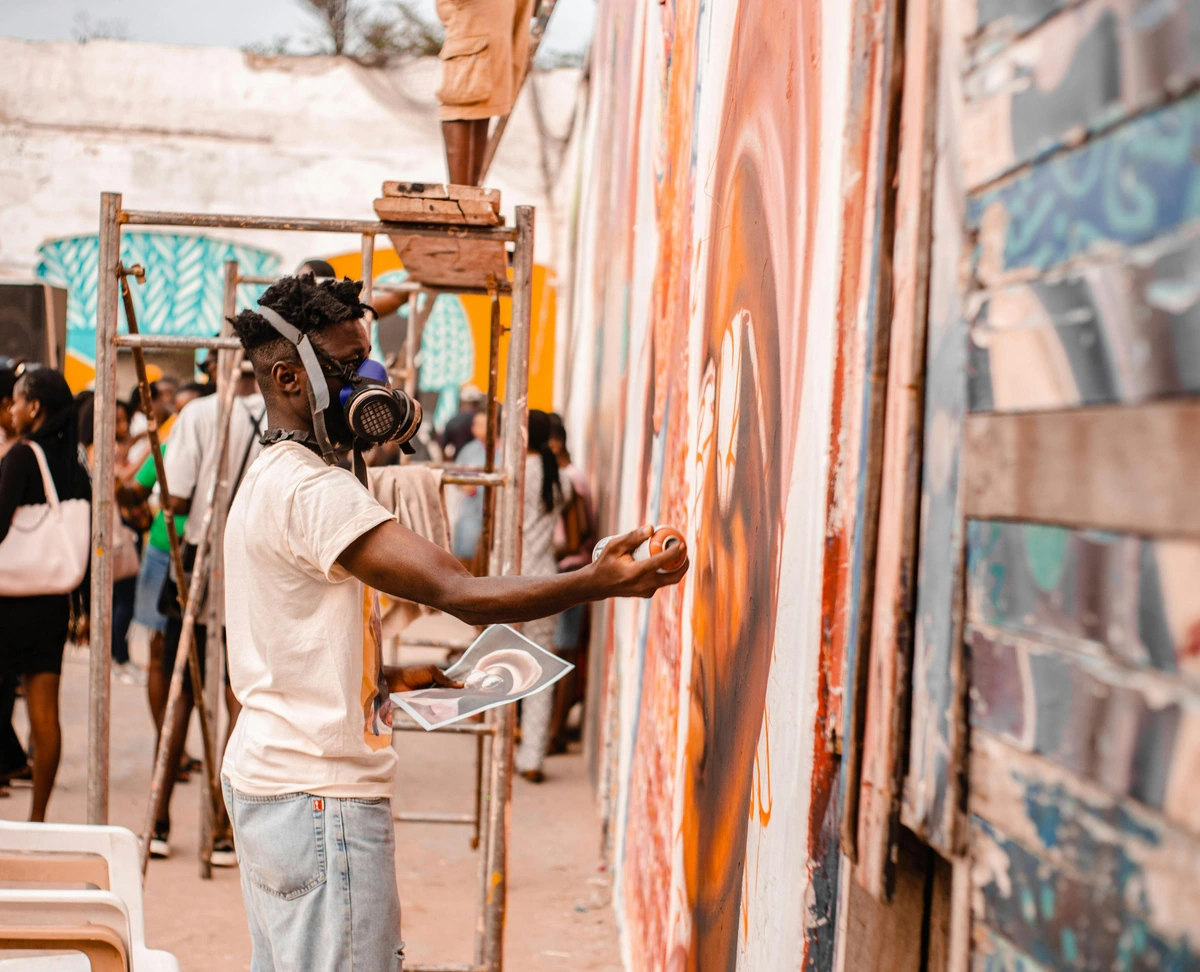
Art can also challenge our perceptions of beauty or traditional notions of skill. Think of readymades, abstract expressionism, or conceptual art – they ask us to reconsider what qualifies as 'art' and why. This pushing of boundaries keeps the art world, and our thinking, from becoming stagnant. It forces us to ask, "But is it art?" and in asking, we learn more about our own definitions and biases. Engaging with challenging art actively fosters critical thinking, prompting us to analyze, question, and form our own interpretations rather than passively accepting what we see. It's like a mental workout that leaves you seeing the world with sharper eyes.
I remember seeing a piece by Ai Weiwei that used thousands of children's backpacks to form a wave-like structure on a building facade, commemorating the students lost in the 2008 Sichuan earthquake. It was visually stunning but carried immense emotional weight and political commentary, leaving a lasting impression. More recently, I saw a small, raw drawing by an emerging artist that depicted the quiet anxiety of modern life so perfectly it stopped me in my tracks. It wasn't technically perfect, but the honesty and vulnerability were incredibly powerful and made me rethink my own approach to expressing difficult emotions in my work. Sometimes the most challenging art is the most honest, forcing you to confront something uncomfortable within yourself or the world. I've also had moments in my own studio where I've tried a new technique or approached a subject in a way that felt completely outside my comfort zone; it was challenging, frustrating, and sometimes felt like a failure, but pushing through that discomfort always led to growth and a deeper understanding of my own creative limits (or lack thereof).
On the flip side, art is an endless source of inspiration. For artists, it's the fuel that keeps us going ([/finder/page/art-inspirations]). Seeing the work of masters or contemporary peers can ignite new ideas or push us to try different techniques. For everyone else, visiting a gallery or seeing a stunning piece online can spark creativity in unexpected ways, even in fields seemingly unrelated to art. It reminds us of the incredible capacity of the human imagination and encourages us to look at the world with more curiosity. I've been inspired by the color palette of a Renaissance painting for a completely abstract piece, or by the structural integrity of a sculpture for a writing project. Inspiration doesn't always look like a lightning bolt; sometimes it's a quiet hum that starts after seeing something beautiful or thought-provoking.
Art pushes us, makes us think, and fuels our own creative fires. It's the spark that ignites new possibilities.
Art Fosters Empathy and Understanding
Building on the idea of art as a voice and a mirror, it also has a unique ability to foster empathy. When an artist expresses a feeling or perspective through their work, they invite the viewer to step into that experience. A powerful portrait can make you feel the subject's joy or pain. An abstract piece might evoke a universal feeling of anxiety or peace. By engaging with art from different cultures or time periods, we gain insight into ways of life and thinking that are different from our own ([/finder/page/how-different-cultures-depict-symbols-in-art]). It's a quiet way to build bridges and expand our understanding of the vast, complex tapestry of human experience. Art helps us step outside our own bubble and understand different perspectives and worldviews.
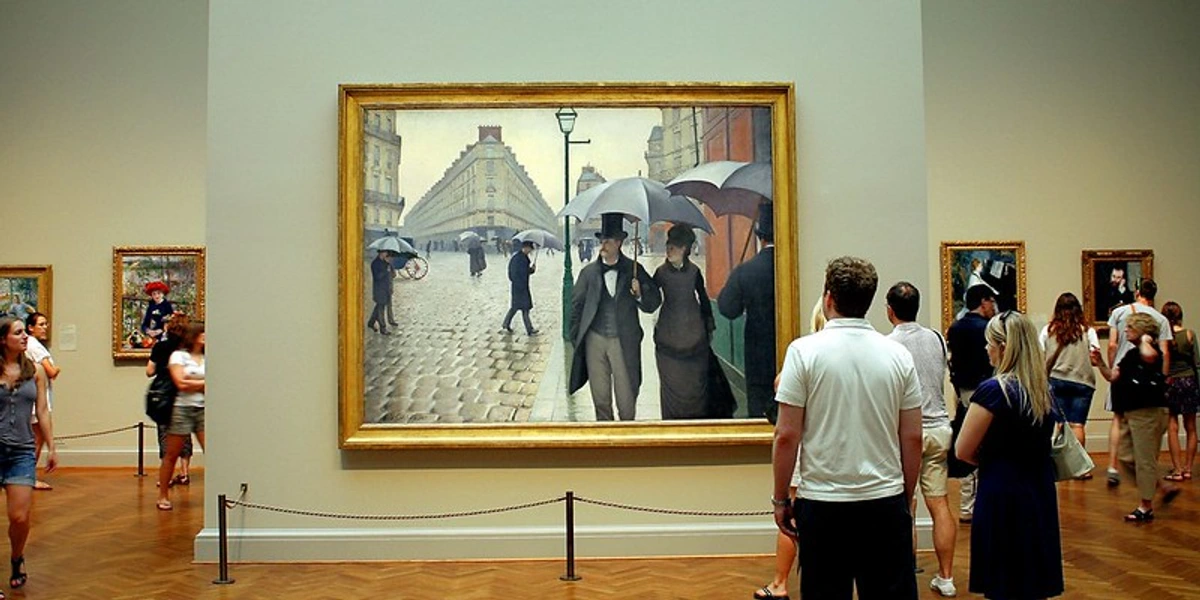
This empathy isn't limited to human subjects. Art can also foster empathy for the natural world, highlighting environmental issues or simply celebrating the beauty and fragility of ecosystems. A landscape painting, a nature photograph, or an installation using natural materials can deepen our connection to the non-human world. It reminds us that we are part of something larger and encourages us to care for it.
I remember visiting an exhibition of contemporary Aboriginal Australian art. The vibrant colors and intricate patterns were visually stunning, but learning about the deep connection of the artists to their land, their history, and their spiritual beliefs, and how these were encoded in the work, was a truly humbling experience. It wasn't just looking at beautiful patterns; it was a glimpse into a worldview profoundly different from my own, fostering a sense of connection and respect across continents and cultures. It felt like a quiet conversation across time and space, facilitated purely by the visual language of the art.
This empathy extends to fostering community. Art brings people together, whether it's artists collaborating in a studio, friends discussing a piece in a gallery, or entire cities celebrating through public art installations. It creates shared experiences and dialogues, bridging divides and building connections. Think about the energy at an art fair or a museum opening – it's a collective appreciation and exploration. Even online, communities form around shared artistic interests. It's a powerful force for connection in an often disconnected world. I've had some of the most interesting and unexpected conversations with strangers simply by standing in front of a piece of art in a gallery and sharing a thought or observation. It's a simple, human connection point.
Through shared experience and broadened perspectives, art helps us connect with others and the world around us. It's a bridge built of paint, clay, and pixels.
Art as Therapy and Healing
This might sound a bit 'woo-woo' at first, but bear with me. Art, both creating it and experiencing it, can be incredibly therapeutic. For the artist, the process itself is often a form of emotional release and processing. Putting feelings onto canvas, shaping clay, or even just sketching can help externalize complex emotions that are hard to articulate in words. It's a way to make sense of the internal landscape. I know that when I was going through a particularly tough time a few years ago, dealing with loss, losing myself in the physical act of painting – the smell of the paint, the feel of the brush, the focus on color and form – was incredibly grounding. It wasn't about making a 'good' painting, but about the sheer act of moving the paint, channeling the raw emotion into something tangible. It was a form of active meditation and processing that words couldn't touch. The finished piece was chaotic and dark, but the process itself was healing. It's a reminder that art isn't always about the viewer; sometimes, it's a vital internal process for the maker. And yes, the studio floor was a glorious, paint-splattered mess afterwards, a tangible map of the emotional journey.
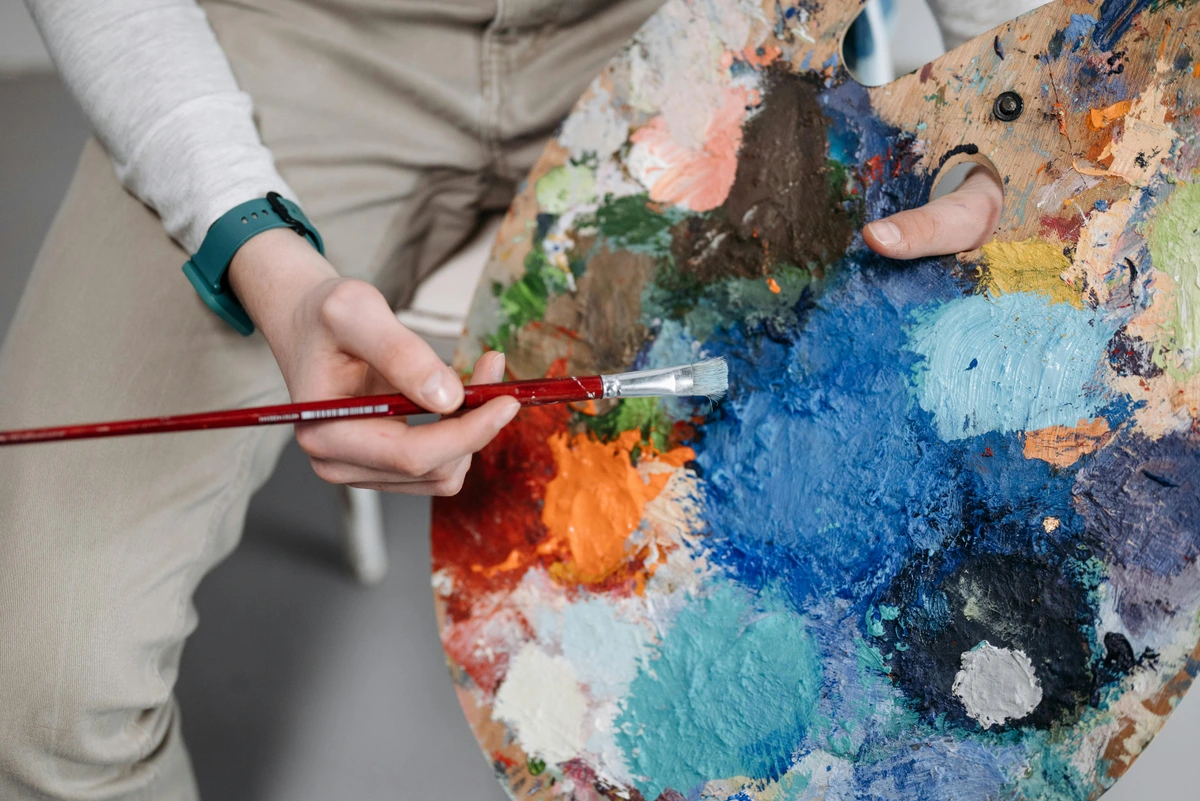
For the viewer, engaging with art can also be healing. It can provide comfort, validation, or simply a much-needed distraction. Seeing a piece that resonates with your own struggles can make you feel less alone. The formal field of art therapy uses creative expression as a therapeutic tool, demonstrating the recognized psychological benefits of engaging with art. Art therapists use various techniques, like using colors to represent different emotions or creating visual narratives, to help individuals process trauma, reduce anxiety, and improve self-awareness. Art can offer a space for reflection and emotional connection, even if it's just a quiet moment in a gallery or with a print on your wall. It's a reminder that human experience, in all its messy glory, is shared. I remember seeing a painting once that depicted a figure curled up in a ball, surrounded by swirling, dark colors; it perfectly captured a feeling of isolation I was experiencing at the time, and simply seeing that feeling externalized and validated in a beautiful, albeit dark, way was surprisingly comforting. It made me feel seen.
Art also plays a role in processing collective memory and trauma, providing a space for communities to mourn, reflect, and heal after difficult events, whether through memorials, public installations, or individual works.
Beyond direct therapy, art can also serve as a form of escape or contemplation. Stepping into a museum or losing yourself in the process of creating can offer a much-needed pause from the demands and stresses of daily life. It's a space where you can quiet the noise, focus on something outside yourself, or simply allow your mind to wander. This isn't about ignoring reality, but about finding moments of respite and mental clarity. For me, the studio is often that escape – a place where the outside world fades away, and the only problems are the ones I'm trying to solve on the canvas. It's a form of active meditation, a way to recharge the mental batteries.
Art offers a unique pathway for emotional processing, healing, finding solace, and offering moments of vital escape, both individually and collectively.
Art Preserves Culture and Identity
While art acts as a mirror to history, it also actively preserves culture and identity. It's a tangible link to the past, carrying traditions, stories, and visual languages across generations. Think of indigenous art forms, traditional crafts, or even national monuments – they embody the history, beliefs, and values of a community or nation. Art keeps these narratives alive, ensuring they aren't lost to time.
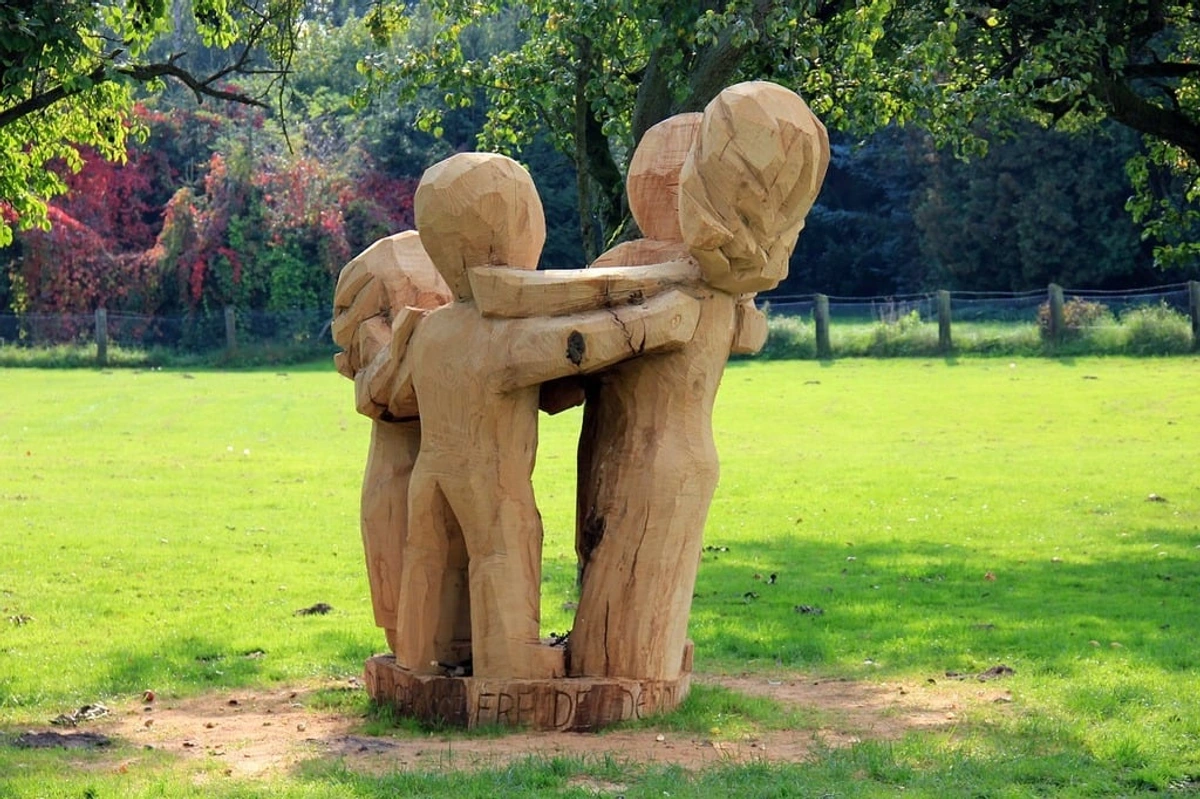
Consider the intricate patterns and storytelling in Aboriginal dot painting from Australia, the symbolic motifs woven into West African textiles, or the unique forms and firing techniques of Native American pottery. These aren't just decorative objects; they are living repositories of history, spirituality, and community identity, passed down through artistic practice. Art ensures these vital cultural threads remain unbroken. It's a way for communities to remember who they are and share that with the world.
Art also serves as a crucial form of historical documentation. Before photography and mass media, art was often the primary way to record events, depict daily life, and illustrate scientific discoveries or religious narratives. From Egyptian hieroglyphs and Roman frescoes to Renaissance portraits and Dutch Golden Age genre scenes, art provides invaluable insights into past societies. Even today, art continues to document our world, capturing moments, movements, and perspectives in ways that other mediums cannot. It's a living archive, constantly being added to, that tells the story of who we are and where we come from. Think of political cartoons, documentary photography, or even protest art – they are documenting our present for the future.
Art also plays a significant role in storytelling, particularly in cultures with strong oral traditions or before widespread literacy. Visual narratives in tapestries, murals, stained glass, or illuminated manuscripts conveyed stories, myths, and religious teachings to a wide audience. Even today, sequential art forms like comics and graphic novels, or the visual storytelling in film and animation, demonstrate art's enduring power to weave narratives and pass down knowledge and culture.
For individuals and communities, creating and engaging with art is a way to express and reinforce their identity. It can be a source of pride, a way to celebrate heritage, or a means of asserting presence and voice in the face of marginalization. Art can even preserve personal memories and family histories, whether through a cherished family portrait, a handmade quilt, or a collection of drawings by a loved one. My own connection to Dutch art history, from the Golden Age masters to De Stijl, subtly informs my contemporary practice, even if it's not explicitly visible. It's a way of carrying forward a visual conversation across centuries, a quiet nod to the artists who came before me. I also have a small, slightly faded watercolor painted by my grandmother; it's not a masterpiece in the traditional sense, but it holds so much of her spirit and memory for me. It's a piece of art that preserves a personal history.
Art is a powerful vessel for memory, heritage, and identity, connecting us to the past and shaping our future. It's the visual thread that binds generations.
Art in Education: Fostering Creativity and Critical Thinking
Beyond its direct impact, art plays a vital, often underappreciated, role in education. Engaging with art isn't just about learning techniques or art history; it's about developing fundamental skills that are transferable to all areas of life. Creating art encourages creativity, problem-solving, and fine motor skills. It also teaches patience, perseverance, and how to handle frustration and failure – essential life lessons learned through the messy process of making. How many times have I scraped off an entire layer of paint because it just wasn't working? Too many to count! But each time is a lesson in not giving up and finding a new approach.

Looking at and discussing art fosters critical thinking, visual literacy, and the ability to interpret complex information. It teaches us to look closely, question assumptions, and understand different perspectives. It encourages us to articulate our observations and feelings, developing communication skills. Art education specifically hones observation skills and visual literacy, crucial abilities in our increasingly visually saturated world, helping us decode and understand the images we encounter daily. I've seen firsthand how introducing simple art exercises can unlock unexpected ways of thinking in people who don't consider themselves 'creative'. I once worked with a group of engineers, and a simple exercise in abstract painting helped them visualize complex problems in a completely new way, leading to a breakthrough in their design process. It's like exercising a different part of the brain, one that's crucial for innovation and understanding the nuances of the world around us. Teaching art has also shown me how different people interpret the same instructions or visual information in wildly different ways, reinforcing the idea that there's no single 'right' way to see or do things – a valuable lesson in flexibility and open-mindedness.
Art education is a powerful tool for developing essential cognitive and life skills, far beyond the canvas. It's training for the mind and soul.
The Economic Impact of Art
While the headlines often focus on multi-million dollar auction sales, the economic importance of art extends far beyond the high-end market. The art world is a complex ecosystem that supports a wide range of industries and livelihoods. Think about the galleries, museums, art fairs, and auction houses themselves. But also consider the artists, curators ([/finder/page/role-of-art-curator]), conservators ([/finder/page/when-to-restore-artwork]), framers ([/finder/page/the-ultimate-guide-to-framing-your-artwork]), suppliers of art materials ([/finder/page/eco-friendly-art-materials-artists-using]), art handlers, shippers ([/finder/page/art-shipping-costs-explained-for-buyers]), insurers, and publishers. The tourism industry benefits significantly from major exhibitions and art destinations ([/finder/page/best-art-cities]).
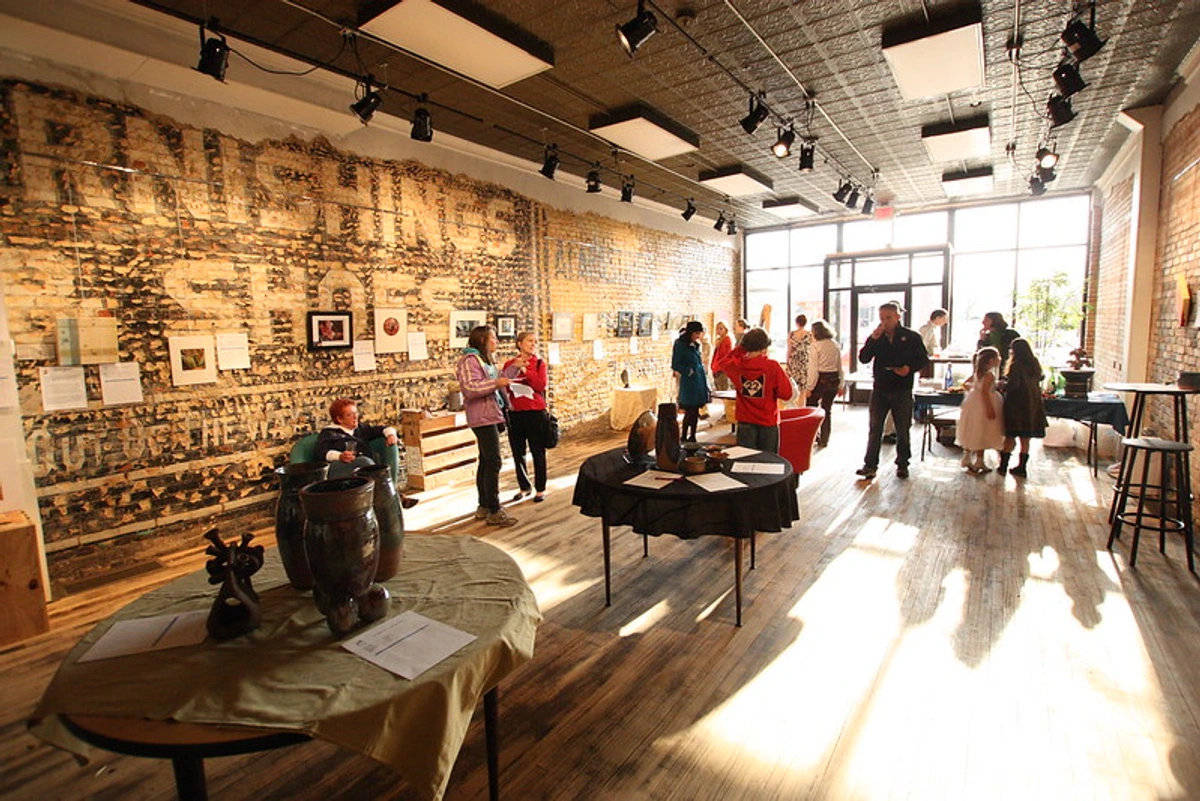
From my own perspective as an artist, navigating the economic side can feel like a whole other job – the marketing, the sales, the endless applications for shows and grants. It's definitely not just about splashing paint around! Sometimes I joke that I spend more time wrestling with spreadsheets and trying to figure out shipping logistics than I do with a brush in my hand. Trying to write a compelling artist statement can feel harder than finishing a painting! But seeing a piece find a new home, knowing it's bringing joy to someone's life, and that the sale allows me to buy more supplies and keep creating, makes all the business stuff worthwhile. Buying art, whether it's an expensive original or an affordable print ([/finder/page/buying-art-prints]), contributes to this economy and directly supports artists and creative businesses. Supporting local artists and independent galleries is a tangible way to invest in your community's creative health. It's a vibrant sector that provides jobs and stimulates local economies, often in unexpected ways. Beyond the direct financial transactions, art also adds significant non-monetary value to the economy through cultural capital, community engagement, and enhancing the quality of life, making areas more attractive for residents and businesses alike. It's a reminder that art isn't just a cultural force, but a real economic one too.
Art is a vital economic engine, supporting diverse industries and adding value far beyond monetary transactions. It's a marketplace of ideas and objects, fueling livelihoods and communities.
Art and Technology: A New Frontier
In today's rapidly evolving world, art is also embracing and being shaped by technology. From digital painting and sculpture to immersive installations and AI-generated art, technology is opening up entirely new possibilities for creation and experience. This isn't just a passing trend; it's a fundamental shift in how art is made, shared, and perceived. It challenges traditional notions of authorship, medium, and even what constitutes a physical artwork.
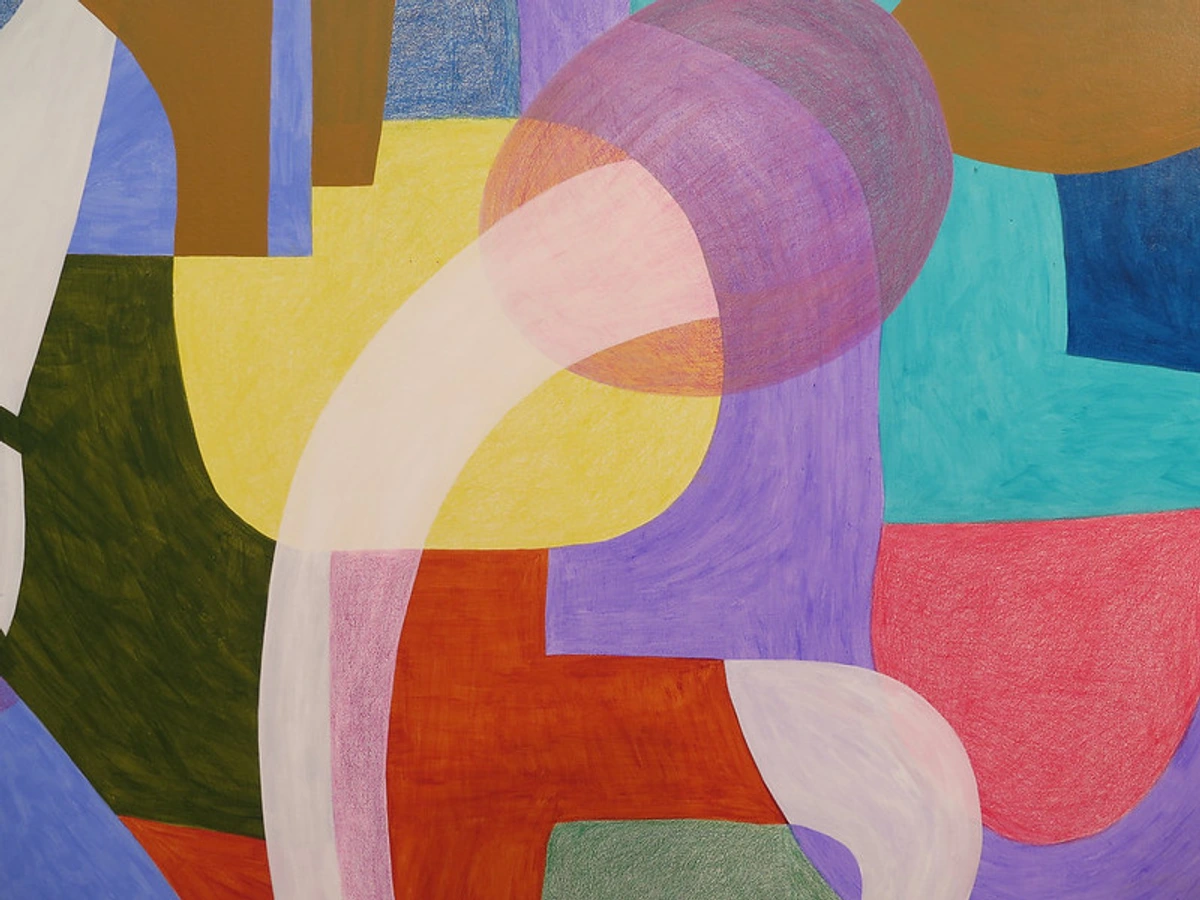
We're seeing the rise of VR/AR art experiences that allow viewers to step inside a painting or interact with digital sculptures. The conversation around NFTs (Non-Fungible Tokens) has, for better or worse, brought digital art and its ownership into the mainstream spotlight, raising fascinating questions about value and authenticity in the digital age. We're also seeing the emergence of generative art (art created using algorithms, often resulting in unique, complex patterns or forms) and net art (art created specifically for and often existing only on the internet, using web technologies). These are exciting, sometimes head-scratching, developments. It's a wild west out there, and it's fascinating to watch (and sometimes participate!).
As an artist, exploring digital tools feels like stepping into a new dimension of play and experimentation, offering ways to manipulate color and form that are impossible with traditional paint. The precision and infinite 'undo' of digital brushes are a stark contrast to the tactile, permanent nature of oil paint, and navigating that difference is a creative challenge in itself. I've experimented with digital brushes that mimic watercolor but allow for infinite undo, and even dipped my toe into exploring how AI-generated art (art created using artificial intelligence algorithms based on vast datasets) can challenge my own creative process or offer unexpected starting points. I remember feeding an AI a description of a feeling I was trying to capture in a painting, and the image it generated was completely unexpected but gave me a visual cue I hadn't considered, pushing my physical painting in a new direction. It's exciting, sometimes daunting, and constantly pushing the boundaries of what art can be. It makes you question what 'creativity' even means.
However, the rise of AI art also brings challenges and ethical questions. Issues around copyright (who owns the AI-generated image?), originality (is it truly creative or just remixing existing data?), and the potential displacement of human artists are important conversations happening right now. It forces us to redefine what it means to be an artist and what we value in the creative process. It's a complex landscape, but one that promises to keep the art world dynamic and evolving.
Technology is not replacing art, but rather expanding its possibilities, challenging our understanding of what art can be, and sparking important conversations about creativity in the digital age.
The Enduring Importance of Art
So, why is art important? It's not a simple answer, is it? It's important because it's woven into the very fabric of human existence. It's our oldest language, our most honest mirror, our most vibrant playground. It challenges us, comforts us, connects us, and helps us understand ourselves and the world around us. It's in the grand halls of the Louvre and the Rijksmuseum, yes, but it's also in the street art down the block, the quirky print in your friend's living room, and the doodle you absentmindedly make on a napkin. It's in the process of creation, the moment of connection, the quiet reflection it inspires.
As an artist, it's my lifeblood. It's how I process, how I question, how I find joy amidst the chaos. And as a human being, it's a constant source of wonder, challenge, and connection. It reminds me that there's always more to see, more to feel, and more to understand. It's not a luxury; it's a necessity. It's what makes us, us. It's the quiet hum beneath the noise of daily life, reminding us of beauty, emotion, and shared humanity.
If you're feeling inspired to bring more art into your life, whether by visiting a gallery, exploring art for sale, or even just picking up a pencil, I encourage you to do it. Trust your gut, explore what resonates with you, and see where the journey takes you. You might be surprised at the profound impact it can have. It's a conversation waiting to happen. Your personal journey with art is valid and uniquely yours – embrace it.
FAQ: Your Art Questions Answered (Sort Of!)
Okay, let's tackle some of those questions that might be buzzing in your head. The art world can feel intimidating, but it doesn't have to be. Here are a few common questions I hear, with my personal take:
Q: Do I need to be an expert to appreciate art?
A: Absolutely not! The most important tool you have is your own reaction. What do you feel? What does it make you think of? Your personal response is valid and valuable. Learning about art history or art styles can deepen your appreciation, but it's not a prerequisite. Just start looking, and trust your gut. There's no 'right' way to feel about a piece. If someone tells you you're wrong for liking or disliking something, politely ignore them. Your connection is what matters. Honestly, sometimes the 'experts' overthink it anyway.
Q: Why is some art so expensive?
A: Ah, the million-dollar question! Understanding art prices is complex, involving factors like the artist's reputation, historical significance, market demand, and provenance. The primary market (buying directly from the artist or gallery) is different from the secondary market (auctions, resale). Honestly, the high end of the market can be baffling even to artists! It's a whole different ecosystem driven by investment and status as much as passion. But remember, you don't need to spend a fortune to own art you love (buy art for less, starting an art collection on a budget). There's incredible art available at accessible prices, especially if you look at prints or support local artists. Don't let the headlines scare you off!
Q: Where can I see art?
A: Everywhere! Of course, there are amazing museums worldwide and galleries. But also look in cafes, public spaces, street art, and online. Art is all around us if you look for it. Check out local art fairs or open studio events – you might discover a new favorite artist! Don't feel like you have to travel to the Louvre (though you totally should if you can!) to have a meaningful art experience. Your local library might even have art you can borrow!
Q: How do I choose art for my home?
A: Start with what you love! Don't worry about trends or matching your sofa perfectly. Think about how the art makes you feel and where you want to feel that way. Consider the size and scale and how it fits with your existing decor. My guide on art at home might help! And honestly, sometimes you just know when a piece is right. It speaks to you. It's like finding a kindred spirit for your wall. If it makes you happy every time you see it, that's the right piece.
Q: Can art really spark creativity in other areas of life?
A: Absolutely! Engaging with art trains your eye to see color, composition, and form in new ways (composition basics). It exposes you to different ways of thinking and problem-solving. Whether you're a writer, a chef, a scientist, or anything else, the visual language of art can open up new pathways in your own creative process. It's like giving your brain a workout in a fun, colorful gym. I've definitely found that looking at how an artist solves a visual problem in a painting has helped me approach a writing block differently.
Q: What's the hardest part about making art?
A: Oh, where to begin? For me, it's often the initial blank canvas – the sheer potential and the fear of messing it up. Or sometimes it's knowing when a piece is finished. You can fiddle forever! There's also the constant internal critic, the self-doubt. It's a constant push and pull between vision and execution, and accepting that sometimes the best work comes from happy accidents or wrestling through frustration. It's definitely not always a smooth, inspired flow! And don't even get me started on the business side... (see above!)

Q: How do I develop my own taste in art?
A: The best way is simply to look at lots of art! Visit galleries and museums, browse online, look at books. Pay attention to what catches your eye, what makes you feel something, even if you don't know why. Don't worry about what you should like. Your taste is personal, like your favorite color or music. It evolves over time. Trust your reactions, read about artists and movements that interest you, and don't be afraid to change your mind. It's a journey of discovery! Think of it like building a playlist – it's unique to you. The more you see, the more you'll refine what speaks to you. Looking at the artists represented by galleries you admire, or exploring artists who influenced artists you already like, can be great ways to branch out and discover new favorites. The Den Bosch Museum is a great place to start if you're in the Netherlands!
Q: How do I approach abstract art? It feels confusing.
A: That's a common feeling! My best advice? Let go of the need to 'understand' it in a literal sense. Think of it more like music. You don't need to understand the notes or the theory to feel the emotion or energy of a piece of music, right? Approach abstract art the same way. Look at the colors, the shapes, the textures, the lines. How do they make you feel? Do they evoke a mood, a memory, a sensation? What does the composition do? Does it feel chaotic, calm, dynamic? Your personal, emotional, and sensory response is the key. Read the title if there is one – sometimes that offers a hint, but don't feel limited by it. Just spend time with it, and see what emerges for you. It's a different kind of conversation than representational art, often more about pure visual experience and feeling. It's less about 'what is it?' and more about 'how does it make me feel?' It's okay if it feels confusing at first; sometimes the most rewarding art is the kind that makes you think and feel without giving you easy answers. Think of it like experiencing a powerful storm or a breathtaking sunset – you don't need to understand the meteorology or physics to feel awe or emotion. Abstract art can be like that.
Q: What's the difference between an original painting and a print?
A: Great question! An original painting is a unique, one-of-a-kind artwork created directly by the artist's hand, usually on canvas, wood, or paper, using mediums like oil, acrylic, or watercolor. A print, on the other hand, is a reproduction of an original artwork. This can range from mass-produced posters to limited edition prints (like giclées or screen prints) which are produced in a specific, limited quantity, often signed and numbered by the artist, and made with high-quality materials. While originals are typically more valuable, prints make art much more accessible and are a fantastic way to own a piece by an artist you admire at a lower price point ([/finder/page/prints-vs-paintings]). Think of it like the difference between a live concert recording and a studio album – both are valid ways to experience the music!
Q: What if I don't like a piece of art? Is that okay?
A: Absolutely! It's more than okay, it's normal. Art is subjective. Not every piece is going to resonate with everyone, and that's part of what makes it interesting. Don't feel pressured to pretend you like something you don't. Instead of focusing on disliking it, try to figure out why it doesn't connect with you. Is it the style? The subject matter? The colors? Understanding your reactions, even negative ones, is part of developing your own taste and understanding what does speak to you. It's all part of the journey. It's okay to say "That's not for me" and move on. There's plenty of art out there! Your honest reaction is always the most valuable one.
Q: How do I start making art myself?
A: Just start! Seriously. You don't need fancy supplies or a degree. Grab a pencil and paper, some cheap paints, whatever you have access to. Don't worry about making something 'good' at first. Focus on the process, the play, the exploration. Try starting with simple observational drawing – sketch everyday objects around you, your hand, a plant. It's a great way to build fundamental skills without pressure. Try different things – drawing, painting, collage, sculpting with clay. Look for online tutorials or local classes if you want guidance, but mostly, just give yourself permission to experiment and make a mess. It's incredibly freeing and a wonderful way to connect with yourself. The first step is always the hardest, but just putting that first mark down is a victory. My own artist timeline is full of messy experiments!
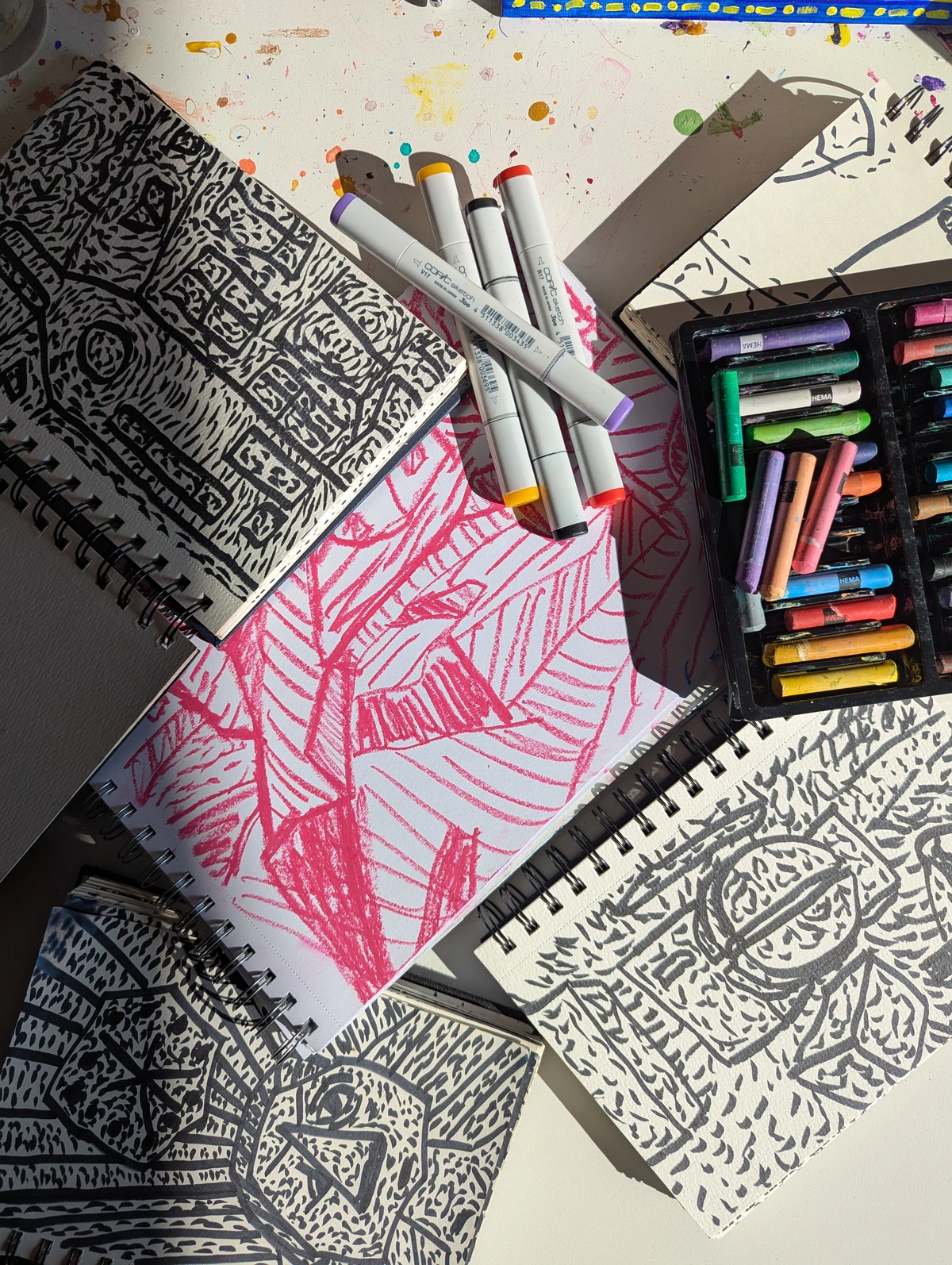
Q: How do I find artists I like?
A: Explore widely! Visit local galleries and museums, browse online art marketplaces, follow artists on social media, go to art fairs ([/finder/page/visiting-art-fairs-tips-for-buyers]). Look at art in unexpected places like cafes or libraries. Pay attention to what catches your eye and makes you feel something. When you find a piece or an artist you like, look into their other work, read about them. It's a process of discovery, one piece or artist leading you to the next. Don't be afraid to dive down rabbit holes! The internet makes it easier than ever to discover artists from all over the world. As mentioned before, looking at the artists represented by galleries you like, or exploring artists who influenced artists you admire, can be great starting points.
Q: Is the art world really that intimidating?
A: It can feel that way, with its jargon ([/finder/page/decoding-art-jargon-a-simple-glossary]), high prices, and sometimes exclusive vibe. But remember, at its heart, art is made by people for people. Most artists and gallerists are passionate and happy to talk about the work. Start with smaller, local galleries or artist-run spaces – they are often more approachable. Don't feel pressured to understand everything or pretend to be an expert. Ask questions! Your genuine curiosity is your best asset. And honestly, sometimes the 'intimidating' stuff is just part of the performance. Focus on the art itself and your connection to it. The rest is just noise. We're all just figuring it out as we go along, artists included!
Q: What's your own favorite piece or artist, and why?
A: Oh, that's like asking a parent to pick a favorite child! It changes constantly depending on my mood or what I'm working on. But if I had to pick one artist who consistently blows my mind, it might be Mark Rothko. Standing in front of a large Rothko painting is a truly immersive, almost spiritual experience for me. It's not about what it represents, but how the sheer presence of color and scale makes you feel. It's pure emotional communication, and that's something I constantly strive for in my own abstract work. It reminds me of the power of simplicity and the profound impact color can have. And if you're ever near 's-Hertogenbosch in the Netherlands, you should definitely visit the Den Bosch Museum – it has a fantastic collection that always sparks something for me.
Q: How do you deal with creative blocks?
A: Ah, the dreaded block! They happen to everyone, artists included. My main strategy is to stop trying so hard. Seriously. If I'm stuck on a painting, I'll walk away and do something completely different – go for a walk, read a book, visit a museum (seeing other art always helps!), or just clean my studio (which, let's be honest, is often necessary anyway!). Sometimes the block isn't about a lack of ideas, but a need to rest or refill the well. I also find going back to basics, like simple drawing exercises or just playing with materials without any goal in mind, can loosen things up. It's about remembering the 'play' aspect of art ([see section above!]), not just the 'finished product' pressure. And sometimes, you just have to sit there and make something, anything, even if it feels terrible, just to break the inertia. It's a constant dance between pushing and letting go.

Q: What about beauty in art? Is that still important?
A: Great question! While not all art aims for traditional beauty (some deliberately challenges it, as we discussed!), the pursuit and experience of beauty remain incredibly important for many artists and viewers. Beauty can be found in countless forms – a stunning landscape, a perfectly rendered portrait, the harmony of colors in an abstract piece, or even the elegance of a conceptual idea. For me, finding beauty in my work, whether it's in a vibrant color combination or a satisfying texture, is a huge part of the joy of making art. And experiencing beauty in art, whether in a gallery or just a print on your wall, can be a profound source of pleasure and connection. It's not the only purpose of art, but it's a powerful and enduring one. Don't let anyone tell you that appreciating beauty is shallow; it's a fundamental human response.




